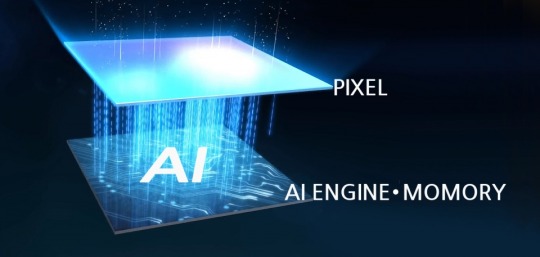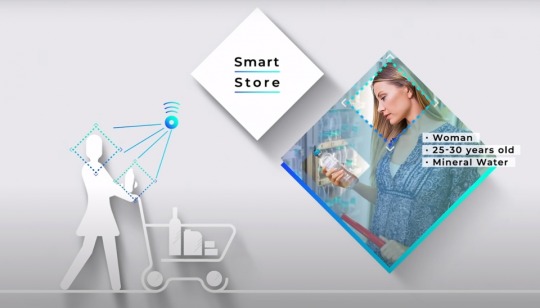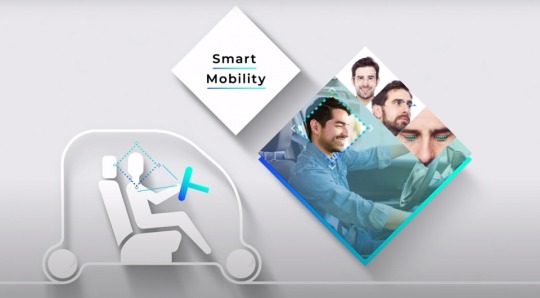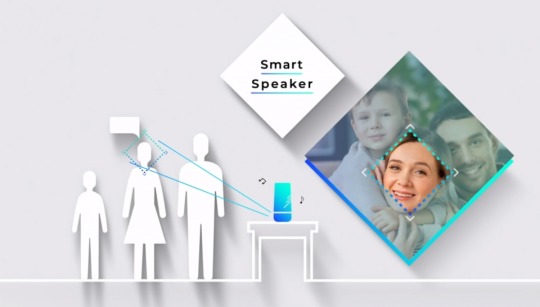Don't wanna be here? Send us removal request.
Text
Future design development

This app will actively encourage users to become vegetarians in the future, and it can be thought of as a way to expand user communication. Users can positively influence one another by exchanging information. They can, for example, inspire other users by sharing photos of their typical diet and recommending similar diets. Setting up a challenge to encourage users to eat vegetarian is another way to encourage them to do so. For users who are attempting to become vegetarian for the first time or who want to continue practising a vegetarian diet, it may be possible to proceed with the challenge of creating a vegetarian habit step by step. In addition, the app will be able to support users' vegetarian diets by creating their own vegetarian meal starter kits and selling and distributing them to users.
0 notes
Text
Sensors
* Sound sensor

: A sound sensor is defined as a module that detects sound waves through its intensity and converting it to electrical signals.
The microphone is basically a sound sensor that detects and measures the loudness of sound. While there are different types of microphone sensors available, smartphones generally use micro-sized electret microphones.
Apart from making and receiving calls, it is used for voice search and voice commands for digital assistant apps like Google Assistant, Siri, etc.
The microphone is a sensor meant specifically for the detection of sound and volume of the sound. As the sound waves trigger the microphone sensor, the phone responds accordingly.
In the most traditional sense, it registers the sound to communicate for phone calls. In other respects, it is also utilized in voice search commands, spoken text dictation, and recognition of incoming sounds for identification, such as the one used by music identifier apps like Shazam.
* Barcode/ QR code sensors

: Most of the smartphones have barcode sensors that can read a barcode by detecting the reflected light from the code. It generates an analog signal with varying voltage that represents the barcode. This analog signal is then converted to a digital one and finally decoded to reveal the information in it. Barcode sensors are useful in scanning the barcodes products or QR codes.
0 notes
Text
Persona & Persona scenario


* Based on my research so far, I developed a scenario of Persona and Persona who are concerned about the environment and hope for a better future.
0 notes
Text
Zero food waste & greenhouse gas emissions

* Climate change threatens our ability to ensure global food security, eradicate poverty and achieve sustainable development. Greenhouse gas (GHG) emissions from human activity and livestock are a significant driver of climate change, trapping heat in the earth's atmosphere and triggering global warming.
Climate change has both direct and indirect effects on agricultural productivity including changing rainfall patterns, drought, flooding and the geographical redistribution of pests and diseases. The vast amounts of CO₂ absorbed by the oceans causes acidification, influencing the health of our oceans and those whose livelihoods and nutrition depend on them. FAO is supporting countries to both mitigate and adapt to the effects of climate change through a wide range of research based and practical programmes and projects, as an integral part of the 2030 agenda and the Sustainable Development Goals.
* Reducing #foodloss & waste means more than saving food, it's protecting the health of our Planet
https://twitter.com/FAO/status/1453298113146458129?s=20
* Today, an estimated one-third of all the food produced in the world goes to waste. That’s equal to about 1.3 billion tons of fruits, vegetables, meat, dairy, seafood, and grains that either never leave the farm, get lost or spoiled during distribution, or are thrown away in hotels, grocery stores, restaurants, schools, or home kitchens. It could be enough calories to feed every undernourished person on the planet.
But wasted food isn't just a social or humanitarian concern—it's an environmental one. When we waste food, we also waste all the energy and water it takes to grow, harvest, transport, and package it. And if food goes to the landfill and rots, it produces methane—a greenhouse gas even more potent than carbon dioxide. About 6%-8% of all human-caused greenhouse gas emissions could be reduced if we stop wasting food. In the US alone, the production of lost or wasted food generates the equivalent of 32.6 million cars’ worth of greenhouse gas emissions.
As the world’s population continues to grow, our challenge should not be how to grow more food, but to feed more people while wasting less of what we already produce. Thankfully, there are plenty of actions we can take at the consumer level to make a significant difference. From delivering leftovers to those in need to freezing food, shopping smarter, and composting to keep inedible scraps out of landfills, we can all take small steps to curb our emissions.
Here are a few tips to help you get started:
Plan ahead and buy only what you need. Going to the store without a plan or on an empty stomach can lead to buying more than we need. To keep your kitchen on track, try to eat leftovers, think of meals you might eat out, and avoid unnecessary purchases by planning your grocery list ahead of time.
Use your freezer. While there are plenty of benefits to eating fresh food, frozen foods can be just as nutritious. They also stay edible for much longer. A lot of seafood, for example, is frozen before it reaches your supermarket and then thawed and put on display. That means it will only stay fresh for a few days. By buying frozen seafood, you can extend the shelf life of the product considerably. Cooking and freezing food—especially produce—before it goes bad is a great way to avoid having to toss it.
Be creative with leftovers. Before you shop, use the food you already have. Websites like Big Oven, Supercook, and MyFridgeFood allow you to search for recipes based on ingredients already in your kitchen. You can also use apps like Epicurious and Allrecipes to make the most of what's in your fridge and pantry.
Blend, bake, or boil. Fruits and vegetables that are beyond ripe may not look pretty, but that doesn't mean they can't still taste delicious in recipes. Try using your wilting, browning, or imperfect produce to make sweet smoothies, bread, jams, sauces, or soup stocks.
Talk it up. Preventing food waste is the most effective way to shrink its impact on the planet. If we avoid producing food that we don't eat, we can save the land, water, and energy that would have been used to make it. And awareness is a good first step; according to ReFED, educating consumers about food waste could prevent 7.41 million tons of greenhouse gas emissions.

* We need to talk about how to deal with climate change. One strategy that should not be overlooked is assisting cities and citizens in reducing food waste. It not only benefits the environment, but it also saves money. Every year, more than 1 billion tonnes of food (roughly one-third of total production) goes uneaten. Food loss or waste accounts for 8% of total global glasshouse gas emissions.
It's not just good for the environment to assist households, businesses, and others in reducing food waste. It can also help cities save money. A report released earlier this year by Champions 12.3 — a group of CEOs, government ministers, and other leaders, including myself, who are all committed to halving food loss and waste — presented a case study from London's experience. Six London boroughs launched an initiative in 2012 to reduce household food waste. Efforts included radio and print outreach, food storage tips, community events, food waste measurement and monitoring, and other initiatives.
#https://www.worldwildlife.org/stories/fight-climate-change-by-preventing-food-waste#https://medium.com/@WorldResources/mayors-dont-let-food-waste-be-a-wasted-opportunity-657ef370950d
0 notes
Text
General feedbacks
Some common feedback for all:
In general, do not contain any references in “Abstract.” It is supposed to be a very short summary of the design and research done.
Describe visually:
How chosen "Maori view" is incorporated into your design.
What are the differences between current existing solutions/products and your design with Maori view (better than others)
How sensor works in your design.
How your design project would work well in line with the methodology and methods you chose.
0 notes
Text
Research Methodology
Inclusive design
*Definitions
1.Inclusive design is a design process (not restricted to interfaces or technologies) in which a mainstream product, service or environment is designed to be usable by as many people as reasonably possible, without the need for specialised adaptations.
2. The inclusive design considers many different aspects of human diversity such as ethnic group, ability, language, culture, gender, and age, therefore, the inclusive design reflects the society’s commands for an advanced lifestyle.
*Process

1.Research
discover goals & needs
Literature search
Market research
competitor audit
observe the users
2.Ideate
Stimulate ideas
Develop concepts
Make prototype
User profile
Persona
Storyboarding
3.Prototype
Produce something tangible
Write the contents that will be tested by users
Document design solution
4.Evaluate
Determine usability & usefulness
Test with users
Catalogue unexplored ideas
Review critiques
5.Produce
Build
Measure
Learn
Microsoft design_ Inclusive design methodology
* Our inclusive design principles
Exclusion happens when we solve problems using our own biases. As Microsoft designers, we seek out those exclusions, and use them as opportunities to create new ideas and inclusive designs.



*Inclusive design is an excellent way to ensure that the product's user experience is considered by a diverse range of user groups within its own environment.
As a UX designer, I will use this project to focus on improving the overall design with UX and creating a service that everyone, regardless of ability, can sympathise with.
This is expected to reach a larger audience that can benefit from a product or service.
0 notes
Text
Solutions & Possibilities


My solution consists of two possible paths explored in the mind map above.
One is aimed solely at those who are new to veganism and those who want to continue veganism in a more enjoyable and efficient manner, while the other is aimed at society and raising awareness about the relationship between veganism and the environment.
At the moment, I'd like to investigate the social perception of veganism and how it influences vegan practice and start practising.
I can approach it from the standpoint of educating more people about various types of communication or designing products that aid in the transformation and communication of veganism's perception.
0 notes
Text
Technologies Review
youtube
Intelligent Vision Sensor

With the spread of 5G and IoT, almost all devices connect to the cloud, and the use of a system that realises various information processing by AI processing information obtained from equipment in the cloud is becoming common.
However, due to the limitations of its capacity and system, real-time data transmission delays, security problems associated with storing personally identifiable data in the cloud, and increased power consumption and communication costs when using cloud services are occurring.
Accordingly, Sony Corporation is accelerating the innovation of installing an AI chip in the image sensor for the first time in the world to respond to the world's No. 1 image sensor reputation and AI edge era.
The product is equipped with an AI processing function in the image sensor to realise edge AI image applications in various industries such as AI cameras that process images at the edge, smart stores, car mobility, and smart speakers, and contribute to building an optimal system in connection with the cloud. expected.
This intelligent vision sensor has a stacked structure in which the image sensor ‘pixel (pixel) chip’ and ‘logic chip’ are embedded. This makes it possible to realise AI systems at the edge without the need for high-performance processors or external memory.
Through various functions such as reducing the amount of data by outputting metadata (semantic information belonging to image data) and not only considering privacy, but also real-time tracking of objects by rapid AI processing and selection of an AI model suitable for the usage environment and conditions. It provides the required applications and features.
About 12.3 million effective back-illuminated pixels are placed on the pixel chip, and information can be grasped with a wider viewing angle. In addition, the logic chip is equipped with Sony's own DSP (Digital Signal Processor) that handles signal processing specialised for AI as well as signal processing circuits of general image sensors and memory that can be used for AI models. This is to realise an edge AI system without requiring a separate high-performance processor and external memory.
In addition, by performing ISP (Image Signal Processor) processing and AI in the process of processing the signal obtained from the pixel chip in the logic chip, the object is output as metadata and applied, so the amount of data can be reduced.
Furthermore, by not outputting image information, it is possible to reduce security risks and respond to privacy protection. The output data format can be selected according to the user's needs and use, such as images taken from general image sensors as well as ISP output format images (YUV/RGB) or ROI (Region of Interest) images cut out of only a specific area.
In the meantime, when shooting a video with a general image sensor, it was difficult to secure real-time performance due to the increase of data transmission in AI processing for each output frame image. With the AI platform MobileNet, a processing time of 3.1 milliseconds (one-thousandth of a second) is possible within one frame of a video, enabling accurate real-time tracking of an object while shooting a video.
Users can record all AI models in memory and update them again according to the usage environment and conditions. For example, if multiple cameras are installed in a store, one type of camera can be used separately depending on the purpose or purpose, such as the installation location, situation, and time. In the case of doorways and shelves, it can be used for various purposes, such as detecting product shortages (stock) and detecting places where many people gather.
In conclusion, AI has been improved over the years, but most have been implemented in the cloud, but with the recent development of NPU (Neural Network Processing Unit) chips, Sony's image sensor is equipped with AI, and deep learning is implemented at the edge with one chip at a lower price. Because AI models can be run at the edge through convolutional neural networks (CNNs), etc., not only will AI be faster, but it will also have various applications such as object recognition, emotion recognition, motion recognition, automatic translation, etc. It is expected that the implementation of optimized artificial intelligence will become possible even at the edge of the field.

(Above picture) Example of real-time tracking of goods or jobs at the checkout counter



:
To make it easier for users to use the veganism app service, I will combine the above intelligent vision sensor with the smartphone's camera lens.
0 notes
Text
Design initiate
Idea concept
Environmentally friendly consideration was given to reducing environmental pollution that would go crazy during service use by actively applying Maori World View as a design metaphor.
It will also be designed to allow users to interact with the service as if they were a part of it, rather than as the only object watching it.
User Flow


Mood board

The initial design (Low fidelity prototypes)






0 notes









































